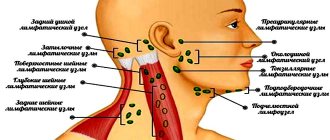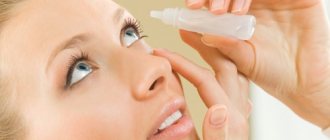Home ⁄ Periodontology (old page)
[113909]
Periodontology is a branch of dentistry that deals with the diagnosis, prevention and treatment of gums. The most common diseases encountered in periodontology are gingivitis, periodontitis, and periodontal disease. We recommend that you carefully care for your teeth and gums, and also undergo regular examinations by a periodontist. Don't delay visiting your doctor if you notice your gums bleeding when biting into hard foods or brushing your teeth. Any disease, including gum disease, is much easier to cure in the initial stage than when it is advanced.
Causes of bleeding gums
If you are interested in the mechanism of how poor hygiene and gum inflammation lead to bleeding, it looks like this.
Plaque and tartar bacteria produce a large number of toxins and various pathogens that trigger a chain of inflammatory reactions in the gums. In particular, this leads to increased permeability and fragility of capillaries (which is due to the fact that blood appears precisely when brushing teeth), as well as to swelling, redness or cyanosis of the gingival papillae. In parallel with this, the process of desquamation (squamation) of epithelial cells of the gum mucosa intensifies, which leads to thinning of the epithelium. The latter further reduces the resistance of gums weakened by inflammation to mechanical stress, for example, when brushing teeth or chewing hard food. Therefore, when together: 1) fragility and increased permeability of capillaries, 2) thinning of the epithelium + 3) even completely normal mechanical stress, it ends in bleeding when brushing your teeth.
By the way, a very common symptom that accompanies bleeding gums is pain when brushing your teeth. The mechanism of its development is also associated with thinning of the epithelium of the gum mucosa and a decrease in the latter’s resistance to mechanical stress. And the conclusion that needs to be drawn from all of the above is that treatment should not be tied to the fight against a separate symptom of bleeding; it should consist in eliminating the main cause of gum inflammation, i.e. removal of microbial plaque and tartar.
Classification of periodontitis
The classification of periodontitis includes the following aspects:
- According to the degree of spread of the disease, local and general periodontitis are distinguished. In the first case, the affected area covers one or more teeth. In the second, it spreads throughout the jaw.
- Based on the form of the disease, periodontitis is classified into acute and chronic.
- Depending on the severity, periodontitis is classified into mild, moderate and severe.
Pain due to periodontitis
There may be no pain during periodontitis at the initial stage of the disease. Subsequently, as the disease progresses, pain appears in the gums, accompanied by redness, bleeding, change in shape, formation of a periodontal pocket, pulsation, and the appearance of bad breath. Pain with periodontitis can occur during brushing your teeth, as well as when biting and chewing food. In severe forms of the disease, pus may be released from the periodontal pocket, and an increase in body temperature may also be noted.
Acute periodontitis
Acute periodontitis can occur with acute or chronic trauma to the maxillofacial area. The main symptoms are sharp pain, bleeding gums, swelling and redness, and possible displacement of teeth. When infectious agents penetrate, a purulent inflammatory process may develop, which in turn causes an increase in the symptoms of the disease. Acute periodontitis requires urgent medical intervention in order to provide timely treatment and prevent the development of complications.
Chronic periodontitis
Chronic periodontitis is a consequence of the development of a disease such as gingivitis, which affects the mucous membrane of the oral cavity. As a result of the penetration of pathogenic microorganisms between the teeth and gums, pathological pockets are formed in them, the sizes of which range from three to more than five millimeters. The development of the inflammatory process that causes periodontitis can be provoked by a weakened immune system, the presence of caries, dental trauma, the influence of chemicals or medications. Periodontitis can also occur as a result of poor-quality fillings or dental prosthetics.
Exacerbation of periodontitis
Exacerbation of periodontitis is characterized by the occurrence of sharp and intense pain in the teeth and gums, which may be accompanied by an increase in temperature and a deterioration in general well-being. Due to increasing pain, the patient is unable to maintain oral hygiene, which in turn provokes the proliferation of bacteria and the appearance of plaque. The size of pathological pockets between the teeth and gums can reach five to six millimeters; there is also the release of purulent formations, redness and swelling of the gums. Exacerbation of periodontitis requires immediate medical attention. To avoid tooth extraction, it is necessary to immediately conduct a diagnostic study in order to ascertain as accurately as possible the nature of the inflammatory process, and undergo a course of comprehensive treatment.
Since ancient times, our grandmothers knew one simple truth: nothing gets rid of diseases better than our Mother Nature. Every disease has its own causes, and every plant perfectly eliminates the causes of the disease. Long observations and centuries of experience have brought to our attention many properties of plants, which often help faster and more effectively than many expensive medicines.
For example, if we consider the beneficial properties of oak bark, we can discover many wonderful features that help cope with many ailments, such as stomatitis, gingivitis, gumboil, uterine bleeding, remove bad breath, remove excessive sweating and prevent bedsores.
Factors predisposing to bleeding gums
If this is not the first time that you have experienced bleeding, this indicates that your gum inflammation is chronic and has been going on for quite a long time. In this case, when brushing your teeth, blood may appear and then disappear again (24stoma.ru). Typically, gums bleed only during exacerbations of chronic inflammation. Exacerbation of the inflammatory process most often occurs in the off-season and is associated with a decrease in immunity or the development of vitamin deficiency.
But we don’t want you to think that poor immunity or vitamin deficiency are the causes of exacerbations of gum inflammation and bleeding. The cause is still plaque bacteria. It’s just that local protective factors in the oral cavity (against the background of decreased immunity) no longer cope with the previous volume of toxins and pathogens released by microbial plaque on your teeth. Other predisposing factors may include mouth breathing and xerostomia, which contribute to an increase in the amount of plaque in the mouth.
Safety regulations
Oak bark is a natural remedy that acts gently without causing harm to health. But some people need to use it with caution. First of all, we are talking about pregnant women and small children.
To avoid unpleasant side effects, you need to consider the following points:
- With long courses of rinsing (more than two weeks), nausea may occur. So take breaks
- If you have an individual intolerance to the substances contained in the bark, you will have to avoid this remedy.
- If you have constipation, you should not take the decoction orally.
Before starting dental treatment, it is advisable to consult a dentist. The specialist will examine the condition of the oral cavity and give his recommendations on the use of folk remedies. He will tell you how to properly prepare decoctions and what other components should be added to them.
Rinsing your teeth with a decoction of oak bark is useful as a preventive measure.
Oak bark for toothache gives quick and lasting results. At the same time, it does not damage the enamel, improves the condition of the gums, relieves bleeding and even has a slight whitening effect. Do not neglect this remedy, even if your teeth are in good condition. Use a decoction of the bark for preventative purposes, and your smile will always remain beautiful!
What diseases are bleeding gums a symptom of?
Bleeding gums can be either an independent disease or a symptom of another. There are three oral diseases that can lead to bleeding:
- Periodontal disease. With periodontal disease, it is not so much the gums that are damaged as the soft tissue around them. Due to the damage to these tissues, which dentists call periodontium, there is an increase in the amount of plaque on the teeth, which leads to microtrauma of the gums. With periodontal disease, tooth pockets do not form, and the gums themselves become inflamed quite rarely.
- Periodontitis. With periodontitis, both the gums and the soft tissue around them are damaged. The disease progresses very quickly. If left untreated, symptoms such as gradual destruction of the alveolar process, inflammation of the gums and soft tissues, formation of dental pockets (which often fester), and so on are observed. Periodontitis is relatively common.
- Gingivitis. Gingivitis causes damage to the gums. If gingivitis is not treated, it evolves into periodontitis.
consumer reviews
Optimist123 (otzovik.com)
Mouthwash Vertex "Asepta" - An excellent product for oral hygiene
Asepta fresh is what you need for daily use. There is no strong taste, but a very mild minty taste. No alcohol, so no burning sensation in the mouth. No need to breed
ADVANTAGES:
what you need for every day and at a good price
FLAWS:
for me there are no cons
Sources:
- Article “Treatment and hygiene features for mild and moderate periodontitis” by S.B. Ulitovsky head Department of PFS, Professor, Doctor of Medical Sciences, A.A. Leontyev Associate Professor of the Department of PFS, Ph.D. PSPbSMU named after. I.P. Pavlova
- Evaluation of the effectiveness of treatment of chronic generalized periodontitis of mild and moderate severity using Asepta antibacterial agents (S.I. Gazhva, A.I. Voronina) S.I. Gazhva, Doctor of Medical Sciences, Prof., Head of Department A.I. Voronina, aspirant, dentist, Department of Dentistry, Faculty of Dentistry, State Educational Institution of Higher Professional Education "Nizhny Novgorod State Medical Academy"
- Article “Comparative assessment of the effectiveness of treatment of chronic generalized periodontitis of mild and moderate severity using Asepta antibacterial agents” (Parodontology, No. 3, 2009)
- Study of the clinical effectiveness of treatment and prophylactic agents of the Asepta line in the treatment of inflammatory periodontal diseases (A.I. Grudyanov, I.Yu. Aleksandrovskaya, V.Yu. Korzunina) A.I. GRUDYANOV, Doctor of Medical Sciences, Prof., Head of Department I.Yu. ALEXANDROVSKAYA, Ph.D. V.Yu. KORZUNINA, asp. Department of Periodontology, Central Research Institute of Dentistry and Maxillofacial Surgery, Rosmedtekhnologii, Moscow
What to do if your gums bleed: treatment
If your gums bleed when brushing your teeth, treatment should be carried out by a periodontist (these doctors do not specialize in the treatment of gums). The most important thing to do at the first stage of treatment is to remove the causative factor in the development of gum inflammation, i.e. carry out ultrasonic cleaning of teeth from microbial plaque and tartar. This can only be done by a dentist. But the course of anti-inflammatory therapy following the cleansing can be carried out at home.
Prevention methods
To minimize the risk of gum disease, it is important to use the right toothpaste, brush, and floss. It is recommended to undergo professional hygiene twice a year. It can be combined with routine examinations by a dentist. If dental diseases are detected, it is necessary to begin treatment as soon as possible.
If the disease has already manifested itself, it is important to choose the right remedies for gum inflammation. Many patients resort to traditional methods of treatment: rinsing with saline and soda solutions or decoctions of medicinal herbs. But it is important to remember that some methods are not only ineffective, but also fraught with danger. Thus, in case of inflammatory processes of any type, heating procedures, the use of alcohol tinctures, and agents that can cause burns to the mucous membranes should be avoided.
Only a doctor can prescribe medications. We do not recommend self-medication - contacting a qualified dentist will help you cope with the disease faster and more effectively and prevent complications. Accurate diagnosis and an integrated approach are the most important conditions for a quick recovery. You can make an appointment with a doctor at the STOMA clinic by phone or through a special form on the website.
Treatment at the dentist's office
Treatment of bleeding gums when brushing teeth includes removing plaque from enamel and tartar and rinsing deep periodontal pockets for periodontitis and periodontal disease. These manipulations are carried out by a specialist in the clinic’s office.
To remove dental plaque, ultrasonic cleaning is used, less often - the use of instruments and mechanical cleaning of the enamel. The number of sessions required depends on the complexity of the work and the amount of deposits.
Washing of periodontal pockets is carried out in chronic forms of periodontitis and periodontal disease. It helps remove pathogenic microbes, their waste products, pus and exudate. The solutions used have antibacterial, antimicrobial and anti-inflammatory effects.
What effect will you get
The actively suppressing inflammation properties of the unique tree are popular not only among traditional healers, but also among dentists. Rinsing the gums with oak bark will have a simultaneous effect of improving the condition of soft structures and preventing the accumulation of bacteria on the chewing surface.
Pharmaceutical form of a natural remedy (dried)
The antiseptic effect ensures inhibition of the viability of unwanted microorganisms.
Along with this, rinsing with oak bark helps the mucous membrane recover from:
- traumatic;
- and destructive damage.
This happens thanks to a multicomponent compound of substances such as resins, proteins, several types of acids, and pectin.
If oak bark is used, rinsing the mouth creates special conditions inside the oral cavity that will prevent the development of various diseases (gingivitis, periodontitis).
At this time, the attacks of pathogenic microbes will stop. They simply will not survive in such conditions if you use a product such as oak bark for gums. As a result, you will maintain the healthy state of the structure, and trophism will remain at a normal level. Accordingly, its main purpose to hold the tooth will not change. Oak bark for gums will create a microclimate that prevents inflammation inside existing pockets.
Gels and toothpastes for bleeding
You should choose a toothpaste based on what is causing your gums to bleed. The composition may contain different components: potassium chloride, sodium sulfate, vitamins, medicinal plants, etc.
The most effective and popular means to solve the problem:
- SPLAT Professional Active is a Russian toothpaste, its distinctive feature is its black color. It has several actions at once - antiseptic, hemostatic. The main components included in the composition are skullcap, spirulina extract, and bergenia extract.
- Lacalut Activ is a whole complex that includes a toothbrush, toothpaste and mouthwash. Aluminum cations are used as a basis.
- Parodontax Classic – contains extracts of medicinal herbs. The pasta is produced not in our country, but in the UK.
- Forest balsam is another domestic product that contains many components of plant origin. There is sea buckthorn essential oil, St. John's wort, chamomile and more.
Recommended toothpaste for treatment
Dental gels are no less effective. It is recommended to use Cholisal, Parodium, Solcoseryl, Metrogil Dent, etc.
Interesting!
It is recommended to change toothpastes periodically, this way you can achieve comprehensive care.
Whitening pastes should never be used for bleeding gums. The thing is that they can irritate the gums, thereby further aggravating the situation. In the video in this article you can learn in more detail about which toothpastes and gels are useful for this problem.
Diseases that can be treated with oak bark
The bark has a good effect not only in the treatment of dental diseases. Traditional healers recommend its use for other health problems. Thus, a decoction of the bark can successfully treat uterine bleeding, erosion and other female diseases. To do this, prepare a medicinal decoction in special proportions and perform douching. When bleeding occurs, the decoction is taken orally.
Many people are plagued by an annoying nuisance - excessive sweating of the feet. Oak bark will help in this case too. Regular baths with its decoction will quickly correct the situation.
The bark is also successfully used for hair care. If your curls have become brittle and lifeless, after each wash you need to rinse them with a healing decoction. The bark will make your hair strong, healthy and shiny. They will stop falling out and gain volume. If you are blonde, then oak bark will give your hair an expressive shade.
Antiseptics for rinsing
Mouth rinse
To rinse the mouth, you should take products with antibacterial and anti-inflammatory effects. In order to enhance overall healing, they are usually used as a supplement.
So, what do dentists recommend:
- Miramistin 0.01%. The drug is especially effective for herpes infections, has a calming and antimicrobial effect.
- Stomatophyte – contains medicinal herbs and alcohol. Recommended for use in the development of gingivitis and periodontal disease.
- Polyminerol – stops bleeding, accelerates regeneration processes.
- Chlorhexidine, concentration not more than 0.05%. This is an antibacterial agent used for inflammatory processes. In addition, dentists recommend rinsing your mouth with it after tooth extraction.
- Chlorophyllipt is based on an extract of eucalyptus leaves. It is prescribed when the oral cavity is affected by pathogenic staphylococci.
- Maraslavin. Contains wormwood herb, savory, black pepper. Helps relieve pain, eliminates allergy symptoms.
- Periodonticide. It contains a large number of medicinal herbs, due to this it has a good anti-inflammatory effect.
To achieve the desired result, rinses should be used in a course. Moreover, one product cannot be used for more than a month. The thing is that many bacteria can develop resistance.
Seven herbs for healthy gums
That is why a person whose oral cavity is parasitized by all these Streptococcus mutans, Lactobacillus and other microbes with exotic Latin names has no time to relax and cannot let them go.
After all, if you just skip evening brushing your teeth a few times, don’t use dental floss, or don’t care for your oral cavity carefully enough, caries, bleeding gums and other troubles ending in “-itis” will immediately make themselves felt: stomatitis, periodontitis, gingivitis. What can we say about bad breath! Statistics eloquently testify that humanity has been forced to fight a serious enemy since childhood. For example, caries in children, which ranks first among chronic diseases, is noted 5–8 times more often than, for example, bronchial asthma. According to various data, 80–90% of children with a primary malocclusion and about 80% of adolescents have carious cavities at the time they graduate from school, and 95–98% of adults have filled teeth (healthypeople.gov). However, it is not just dental health that is important for overall health. Thus, experts from the American Academy of Periodontology believe that the importance of oral diseases for overall health is significantly underestimated. Thus, according to one study, periodontal disease is associated with other problems, including heart and respiratory diseases, premature birth and low birth weight, stroke, osteoporosis and diabetes (www.perio.org). How to avoid inflammation? How to strengthen your gums and prevent loose teeth and bleeding? How to prevent or quickly and effectively get rid of all these unpleasant manifestations? Not to mention that bad breath that can scare everyone away? All these questions, swarming in your head and sometimes preventing you from living a full life, force you to start looking for an effective weapon that will somewhat pacify the dispersed “resort-goers.”
Some mouthwashes that we see on the shelves of supermarkets or cosmetic stores are intended to be used for hygienic purposes only. As a rule, they do not have a therapeutic effect, except perhaps for the short-term effect of eliminating bad breath. The same applies to regular rinsing of the mouth with clean water, which has a purely mechanical effect. Therefore, patients, faced with problems such as periodontitis, bleeding gums, increased sensitivity of teeth to cold and hot, bad breath, and also in order to prevent caries, if they do not always go to the dentist, then they certainly go to the pharmacy. After all, it is there that they can recommend any over-the-counter medicine, taking into account the tastes and income of a particular patient.
In addition, it is on pharmacy shelves that you can find not only preventive, but also truly effective preventive and therapeutic agents to eliminate the above problems, containing active ingredients with antibacterial, antifungal, astringent, anti-inflammatory and/or analgesic, as well as deodorizing properties. However, few of them contain all the ingredients that allow the drug to provide the whole range of the above effects.
At the same time, some synthetic drugs cannot always be used for a long time, since they have a detrimental effect on the saprophytic microflora, which creates a normal, natural microclimate in our oral cavity.
In this case, preparations based on medicinal plants come to the rescue: for centuries, dentists and periodontists have recommended their patients to rinse with various infusions, extracts, and decoctions of medicinal herbs - their use for inflammation of the oral cavity has been known since ancient times and the doctor’s advice: “Rinse your mouth chamomile, sage, oak bark...,” more than one generation of patients has heard.
Today there is no longer any need to prepare infusions and decoctions yourself, occupying all the dishes in the house with them; Moreover, there is no need to use all these infusions in turn or mix in certain proportions - thanks to (Europlant PhytoPharm is part of the Martin Bauer Group, Germany), we are able to significantly facilitate the care of patients about the health of their oral cavity.
The complex herbal preparations STOMATOFIT and STOMATOFIT A, presented on the Ukrainian pharmaceutical market, exhibit the entire range of properties that our patients need as a natural antiseptic, which has an antimicrobial and antifungal effect, an active anti-inflammatory and analgesic agent, which exhibits hemostatic and astringent properties, which also helps the healing of wounds, and freshens breath.
This is achieved due to the fact that the STOMATOFIT solution contains extracts from seven medicinal plants (see block), traditionally used (in particular in dentistry) to combat the listed problems.
The complex of natural biologically active substances contained in these plants, which enhance each other’s effects, allows us to speak of the STOMATOFIT product line as truly effective, efficient products that never disappoint patients’ expectations and bring long-awaited relief already on the first day after regular use of the drug. In addition, STOMATOFIT A contains anesthesin, which allows it to help even those who complain of severe pain or sensitivity of teeth or gums.
Not having problems with your gums or oral cavity is a fairy tale. Quick relief from bleeding gums, inflammation of the oral cavity, and unpleasant odor - this is STOMATOFIT!
Folk remedies for bleeding gums
After consulting with your doctor, you can also use some traditional medicine that eliminate existing bleeding no worse than medications.
1. Oak bark. This is one of the simplest and at the same time effective means of treating bleeding gums. This bark is rich in tannins, which strengthen the gums and prevent their bleeding. For treatment, just take 1 tbsp. crushed oak bark, pour 100 ml of boiling water and put on fire. Keep the product on the fire for 7 minutes, then remove and let it cool. Rinse your mouth with this medicine 2 times a day.
2. Chamomile. This flower boasts excellent anti-inflammatory properties, which eliminates the cause of gingival bleeding caused by the inflammatory process. Take 1 tbsp. chamomile flowers and load into a thermos. Fill the healing plant with 250 ml of boiling water, close the lid of the thermos and leave the product for 4 hours. Let it cool, and then strain the medicine and you can rinse your mouth with it after meals 3 times a day.
3. Sage. Another natural remedy that is extremely beneficial for oral health is sage. To get rid of bleeding gums you will need to take 2 tbsp. dry sage leaves and irritate them with 400 ml of boiling water. Leave the finished mixture to infuse for half an hour, then strain and rinse your mouth with the mixture twice a day, morning and evening.
Let us only add that the considered folk remedies should not be the only medicines in the fight against bleeding gums. They can only be used in combination with medications prescribed by a doctor.
About the benefits of oak bark
It is difficult to list all the beneficial properties of oak bark. It contains various acids, proteins, pectin, resins that have an astringent effect, and tannins.
A natural antiseptic, oak bark is often used in medicine, including dentistry.
Thanks to this combination of natural components, the bark can be used for many diseases. It has anthelmintic and antibacterial properties, is a natural antiseptic, promotes wound healing, and accelerates the restoration of skin tissue.
One of the beneficial properties of oak bark is the ability to stimulate natural defenses and strengthen the immune system.
How can diet help treat gums?
If your gums bleed when brushing your teeth, treatment should begin immediately. In addition to drug therapy, it is important to maintain proper nutrition. The patient needs to reduce the consumption of sugar and fatty foods. Regardless of age, it is important to get enough vitamins. Doctors recommend including in your diet: vegetables, fruits, fish, cheeses, cottage cheese. The dentist may prescribe a multivitamin supplement.
For treatment to be effective, you cannot exclude from your diet food containing calcium, phosphorus, and vitamins: C, E, B1 and B2. These components strengthen teeth and soft gum tissue. It is forbidden to eat spicy, sour foods. It irritates the mucous membrane. You should also not eat crackers, caramel, nuts, etc. When chewed, these products can injure the gums, after which bacteria will enter the wounds and the inflammatory process will begin.
In addition, doctors urge you to stop smoking and drinking alcohol.
Types of diseases
Dentists, first of all, classify periodontitis according to the prevalence of the inflammatory process:
- generalized inflammation spreads to the entire periodontium of the jaw;
- localized - in the area of one or two teeth.
According to the duration of the process, acute and chronic periodontitis is distinguished.











